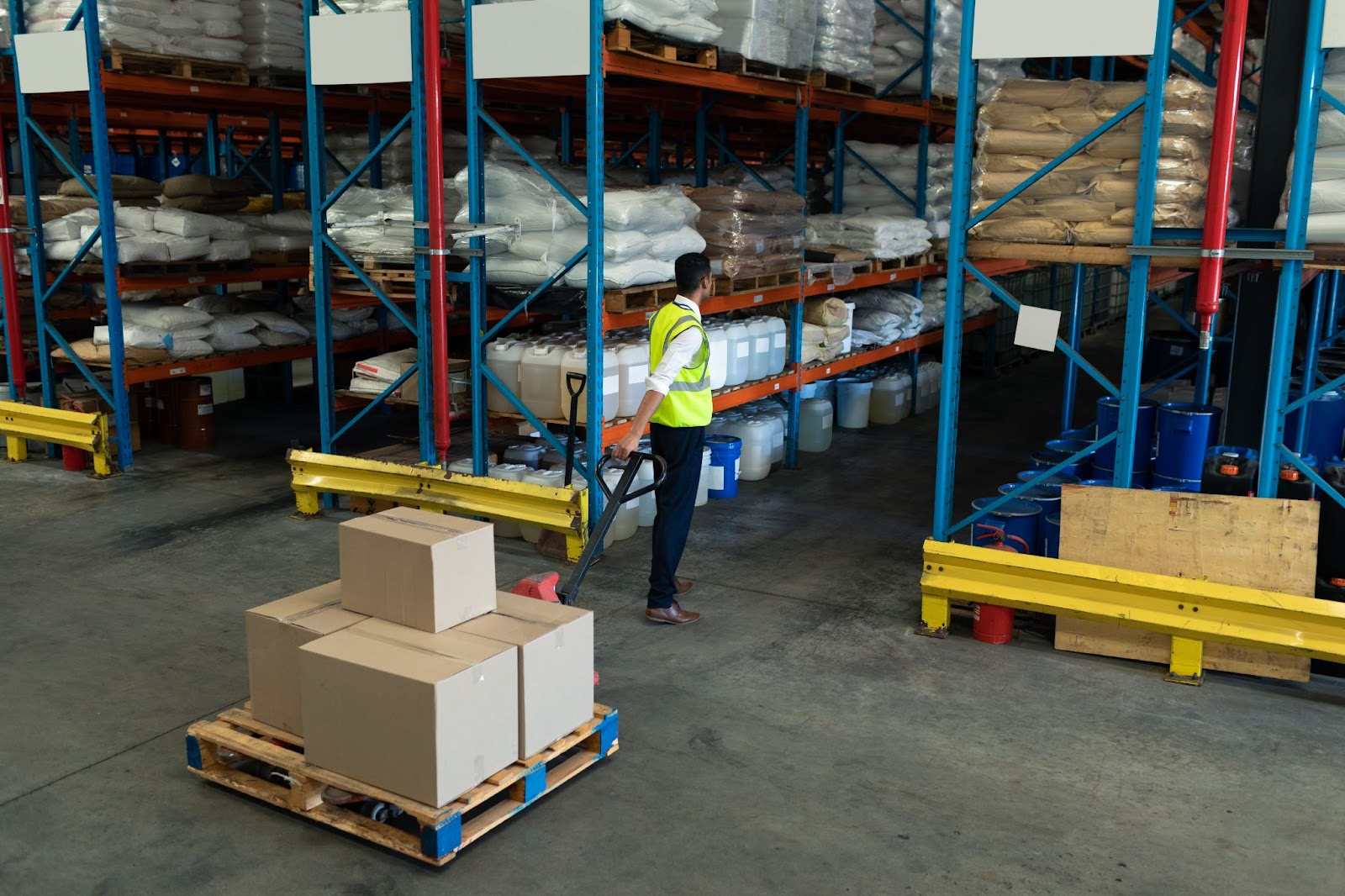
🎄 Festive Rush - Deliveries might take a bit longer. We appreciate your patience.
Festive Period 2025
Cut-Off Times
Misunderstanding Minimum Order Quantity (MOQ) can cause unexpected costs, shipment delays, and tension with suppliers. For Australian importers, MOQ plays a major role in freight logistics, impacting container use, purchasing decisions, and supplier negotiations.
A solid grasp of MOQ helps streamline shipments and avoid costly inefficiencies across the supply chain.
Here’s how MOQ works in freight, why it matters, and how to use it strategically.
For example, small LCL shipments often cost more per cubic metre than a Full Container Load (FCL). MOQs help avoid wasted space and improve efficiency.
For instance, sending a small load via Less than Container Load (LCL) often costs more per cubic metre than booking a Full Container Load (FCL), where the container is fully used. MOQs help freight forwarders and suppliers avoid wasted space and improve shipping efficiency.
Unlike retail MOQs, which focus on pricing tiers or discounts, freight MOQs are driven by operational factors such as container space, consolidation fees, or minimum handling charges.
For Australian importers, understanding how MOQs work can help you reduce per-unit shipping costs, plan inventory better, and negotiate smarter deals with overseas or local suppliers.
Suppliers and freight forwarders set MOQs to improve efficiency and reduce costs across the supply chain.
Manufacturers use MOQs to keep production efficient and profitable. Small runs cost more due to setup time, extra labour, and material waste. Setting a minimum ensures each batch is large enough to offset fixed expenses and maintain steady inventory turnover.
MOQ in wholesale also helps suppliers plan production volume and manage supply chain expectations upfront.
Freight forwarders apply MOQs to maximise cargo space and reduce waste. In LCL shipments, a minimum chargeable volume, such as one cubic metre, often applies, even if your freight occupies less space.
For FCL shipping, forwarders aim to fill containers as efficiently as possible. Underutilised containers increase the cost per cubic metre and reduce margins for both freight providers and their customers.

MOQ plays a major role in how Australian businesses manage both international and domestic freight, especially for e-commerce brands, FMCG distributors, wholesalers, and manufacturers dealing with regular high-volume shipments.
For importers sourcing from Asia, MOQs are often tied to container capacity or minimum chargeable volumes. So if your supplier’s MOQ is 15 CBM, you’re already nearing half a container load. In LCL freight, suppliers may require at least 10 to 15 CBM to cover the costs of consolidation and handling.
As shipments near full container size, switching to FCL shipping often reduces the cost per cubic metre and avoids LCL-related fees.
Domestically, MOQs may be based on pallet space, total weight, or delivery zones. For example, metro couriers servicing capital cities might apply a 100-kilogram minimum to qualify for bulk freight rates. Some 3PLs also set MOQs on storage, picking, or packing to ensure operational efficiency.
For smaller businesses, working with freight providers who offer consolidation or shared container options can help meet MOQ thresholds more affordably.
MOQ can be calculated in a few different ways, by unit count, cubic volume (CBM), or weight, depending on how your supplier or freight partner structures their requirements. Understanding these basic formulas can help you avoid excess charges and choose the most efficient shipping option.
A supplier requires a minimum of 1,000 units
Each unit is 0.02 CBM
Calculation: 1,000 × 0.02 = 20 CBM
A freight forwarder sets a 12 CBM minimum
Each unit is 0.05 CBM
Calculation: 12 ÷ 0.05 = 240 units
An air freight provider sets a minimum chargeable weight of 200 kg
If your cargo is bulky but light, volumetric weight may be used instead
As shown, maximising container space through FCL shipping can significantly lower your per-unit freight cost.
Minimum Order Quantity (MOQ) and Economic Order Quantity (EOQ) are often confused but serve different purposes in freight and inventory planning.

For example, your EOQ model might recommend ordering 300 units per cycle, but your supplier's MOQ is 500. This creates a gap between what’s cost-effective for your business and what’s required by your supplier.
To manage this difference, you might:
MOQ terms are often negotiable — especially if you’re placing repeat or bundled orders.
MOQ terms are often negotiable, especially if you’re placing repeat or bundled orders.
Understanding how your supplier calculates MOQ can help you manage cash flow, avoid over-ordering, and negotiate more confidently. When discussing orders, ask clear questions like:
To meet MOQ more efficiently, you could:
Discussing MOQ expectations early helps reduce risk, avoid stock issues, and build stronger supplier relationships over time.
MOQ plays a major role in freight planning; it affects container use, freight costs, and how smoothly inventory moves through your supply chain. For Australian importers and shippers, understanding MOQ helps turn freight constraints into cost-saving opportunities.
A strategic approach to MOQ can lower shipping expenses and improve supplier negotiations. If you're looking to optimise freight for bulk or consolidated shipments, Couriers & Freight can help customise a solution to suit your business.









MHP

No Surcharge*

$16.50

$14

$15.50
$0

$15.50

$14.75
$0
$0
$0
$0
MHP Large Item

No Surcharge*

$16.50

$75

$62

$62

$60.10

$14.75
$0
$0
$0
$0
Residential Pickup

No Surcharge*

$6
$0

$9
--

$9

$10.60
$0
$0
$0
$38.50
Reidential pick up 30-99kgs

No Surcharge*

$63
$0

$9
$0

$9

$74.15

$20
Won't carry
Won't carry

$38.50
Residential pick up 100kgs+

No Surcharge*

$198
$0

$9
$0

$9

$158.87

$50
Won't carry
Won't carry

$38.50
Residential Delivery up to 29kgs

No Surcharge*

$6
$0

$9
--

$9.00

$10.60
$0
$0
$0

$38.50
Residential Delivery up 30-99kgs

No Surcharge*

$63
$0

$9
$0

$9

$74.15

$20
Won't carry
Won't carry

$38.50
Residential Delivery 100kgs+

No Surcharge*

$198
$0

$9
--

$9

$158.57

$50
Won't carry
Won't carry

$38.50
Tail Lift Pick up 50-99kgs Sydney / Melbourne

No Surcharge*

$45

$50-$250

$88

$88

$88

$44.07

$120
Won't carry
Won't carry

$61.50
Tail Lift Pick up 100-299kgs Sydney / Melbourne

No Surcharge*

$85

$50-$250

$88

$88

$88

$44.07

$120
Won't carry
Won't carry

$61.50
Tail Lift Pick up 300-499kgs Sydney / Melbourne

No Surcharge*

$120

$50-$250

$88

$88

$88

$44.07

$120
Won't carry
Won't carry

$61.50
Tail Lift Pick up 500kgs + Sydney / Melbourne

No Surcharge*

$250

$50-$250

$88

$88

$88

$44.07

$120
Won't carry
Won't carry

$61.50
Tail Lift Delivery 50-99kgs Sydney / Melbourne

No Surcharge*

$45

$50-$250

$88

$88

$88

$44.07

$120
Won't carry
Won't carry

$61.50
Tail Lift Delivery 100-299kgs Sydney / Melbourne

No Surcharge*

$85

$50-$250

$88

$88

$88

$44.07

$120
Won't carry
Won't carry

$61.50
Tail Lift Delivery300-499kgs Sydney / Melbourne

No Surcharge*

$120

$50-$250

$88

$88

$88

$44.07

$120
Won't carry
Won't carry

$61.50
Tail Lift Delivery 500kgs + Sydney / Melbourne

No Surcharge*

$250

$50-$250

$88

$88

$88

$44.07

$120
Won't carry
Won't carry

$61.50
Dead weight over 32KGS carton freight

No Surcharge*

$16.50

$75

$70

$70

$70

$14.75
$0
Won't carry
Won't carry
$0
Oversize Surcharge 1.20 - 1.54

No Surcharge*
--
$0
$0
$0
$0

$5.40

$10

$15
Won't carry
$0
Oversize Surcharge 1.55 - 1.85

No Surcharge*

$17

$20
$0
$0
$0

$11.93

$10

$15
Won't carry
$0
Oversize Surcharge 1.86 - 2.20

No Surcharge*

$37

$40
$0
$0
$0

$11.93

$10
Won't carry
Won't carry
$0
Pallet Surcharge

No Surcharge*
--
$0
$0
$0
$0
$0
$0
Won't carry
Won't carry
$0
Hand Unload Fee Carton

No Surcharge*
--
$0

$70

$70

$70

$47
$0
Won't carry
Won't carry

$61.50
Western Australia Regional Surcharge

No Surcharge*

%10
$0
$0
$0
$0
$0
$0
$0
$0
$0
*Surcharges may apply to areas/deimensions not listed
**Prices correct of 16th September 2024
Click to start shipping in less than 60 seconds